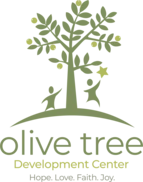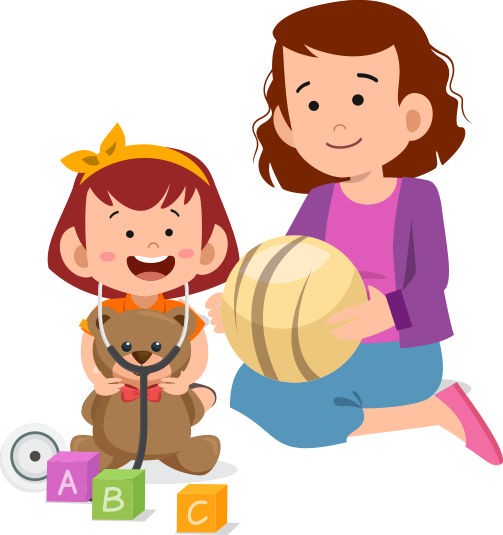Speech Therapy
What is Speech Therapy?
Speech Therapy focuses on preventing, assessing, diagnosing and treating speech, communication and feeding disorders. In Olive Tree Development Center, your Speech Therapist will work closely with the whole family to ensure that a child will be able to express himself and connect with others through language in the best way he/she can. We also work with children with difficulties in feeding and swallowing.
How Does Speech Therapy Work?
Does My Child Need Speech Therapy?
- Does not babble as an infant
- Does not seem to react or respond when others talk to him or call his name
- Says only a few words by 2 years of age
- Does not seem to understand instructions
- Does not use simple sentences by 3 years of age
- Has trouble playing with other children
- Has speech that is difficult to understand by 3 years of age
- Does not eat age-appropriate food (e.g. bottled milk and spooned purees during infancy, drinking cups and finger food during toddlerhood)
Speech Therapy is the standard treatment for children and adolescents diagnosed with:
Assessment
The Speech Therapist will conduct an assessment at our speech therapy centre during the first session. A number of procedures will be carried out to elicit and observe your child’s strengths and challenges in communication.
Standardised assessment tools available include:
- "It Takes Two to Talk" Hanen Parent Training Program
- “More Than Words” Hanen Parent Training Program
- Oral - Placement Therapy
- Alternative and Augmentative Communication (AAC)
- Prompts for Restructuring Oral Muscular Phonetic Targets (PROMPT)
How to Choose the Best Speech Therapy Centre for My Child?
At Olive Tree Development Center, we use both evidence-based treatment protocols, all tailored to your child’s individual needs. The therapy sessions can be carried out at the speech are carried out in an engaging and meaningful manner, and treatment programmes are designed to involve the entire family. The session will take place at our speech therapy centre.
Which Speech Therapy Approaches Do We Use?
"It Takes Two to Talk" Hanen Parent Training Program
It Takes Two to Talk™ is a well-known model of family-focused early language intervention for young children with expressive and/or receptive language difficulties. The goal of this workshop is to empower parents to become their child’s primary verbal behaviour facilitator, thereby maximising the child’s opportunities for communication development in everyday situations. “It Takes Two to Talk” is best suited to treating late-talking toddlers and preschool-age children with specific language impairment and children with cognitive and developmental delays under the age of five.
“More Than Words” Hanen Parent Training Program
More Than Words™, is a family-focused program that equips parents of children under the autism spectrum. Here, parents learn to help their children connect and communicate meaningfully with the world around him.
Oral - Placement Therapy
Oral Placement Therapy targets specific movements needed for improving speech clarity and feeding. Therapists may use tools (e.g. chewy tubes, straws, horns) to facilitate development of oral motor skills. It is one aspect of an oral motor therapy program that works on the motor components used in feeding and speech.
Note: Oral Placement Therapy is always used together with traditional speech therapy methods so that a child's oral-motor skills may be functionally applied to different settings.
Alternative and Augmentative Communication (AAC)
Augmentative and Alternative Communication (AAC) is a range of training protocols that can be used for individuals who struggle with verbal expressive communication.
AAC devices may be used to facilitate communication and language development. Devices range from “no-tech” options (e.g. a communication board printed on paper) to “low-tech” (e.g. a little Mack) to “high-tech” devices (e.g. Proloquo2go on the iPad or tablets). The Picture Exchange Communication System (PECS) is one of the most widely-accepted AAC protocols.
Prompts for Restructuring Oral Muscular Phonetic Targets (PROMPT)
PROMPT is an acronym for Prompts for Restructuring Oral Muscular Phonetic Targets. The technique is an approach that uses touch cues to a child’s articulators (jaw, tongue, lips) to manually guide them through a targeted word, phrase or sentence. The technique develops motor control and the development of proper oral muscular movements, while eliminating unnecessary muscle movements, such as jaw sliding and inadequate lip rounding.



